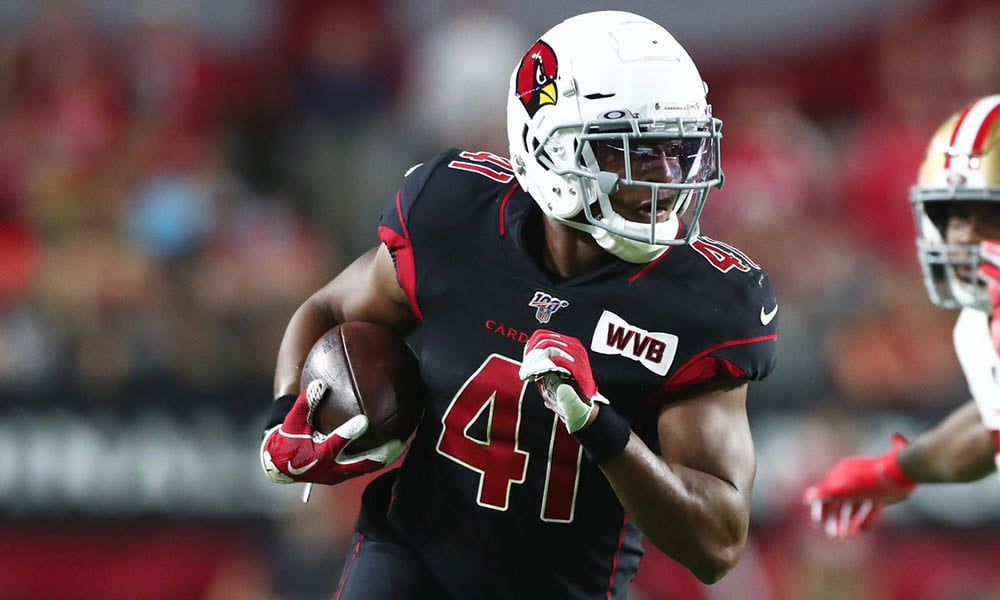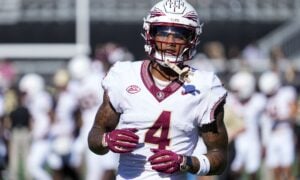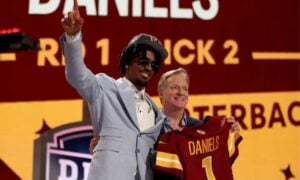Dynasty Blunder: 2020 Kenyan Drake

It’s always great to look back on our successes as dynasty analysts or as a community. However, I believe that it’s more instructive to examine our past failures. Of course, not all failures were avoidable. Dynasty and fantasy analysis consists of predicting the future, and the future often has unpredictable events, such as severe injuries.
But even though the future is tough to nail down with certainty, there are ways to improve our process over time. Learning from our past mistakes is the best way to ensure superior future performance. Maybe there were warning signs that we ignored, or there were positive attributes about a player or an offense that we didn’t consider. No matter the direction, I want to use this series to learn and grow as a dynasty analyst and share that growth with the readers. You can also find the previous entries at the bottom of this article.
Background
Kenyan Drake has had one of the most interesting careers of any dynasty asset since he came into the league in 2016. Here is his career snapshot going into the 2020 season.

The Dolphins took him in the third round of the 2016 NFL Draft as Lamar Miller’s replacement. Miller had recently signed with the Texans in free agency, leaving the Dolphins with 2015 fifth-rounder Jay Ajayi, 2014 UDFA Damien Williams, and Drake as their primary running backs. They also signed veteran Arian Foster in the summer of 2016 to fill out their backfield.
However, even though Drake had superior draft capital, Ajayi became the Dolphins’ workhorse back in 2016. He even pushed Foster into retirement, and he relegated Drake to a meaningless bench role. But in 2017, Drake received his opportunity to shine. The Dolphins traded Ajayi to the Eagles in the middle of the season, leaving Drake as the lead back ahead of Williams. Drake averaged an impressive 4.8 YPC in 2017, and he also emerged as a solid pass-catcher with 32 receptions.
Unfortunately, Adam Gase reared his ugly head in 2018, as his tenure as Dolphins’ head coach turned in a horrifically negative direction. For some reason, he signed aging veteran Frank Gore and deployed him as the lead back ahead of Drake. While Gore played decently, Drake seemed like the better running back, especially given his outstanding receiving production.
The Dolphins fired Gase after the 2018 season, replacing him with Brian Flores. The team seemed to tank for the 2019 season, and they benched Drake for 2018 fourth-rounder Kalen Ballage. After a few weeks, the Dolphins traded Drake to the Cardinals, where our main story begins.
Thought Process
When Drake joined the Cardinals, both starter David Johnson and backup Chase Edmonds had injury issues, leaving him as the only healthy back on the roster. Drake almost immediately became the Cardinals’ workhorse back, maintaining that role for the final eight games of 2019.

Charts courtesy of DLF Player Scoring History app.
He delivered some monster fantasy numbers in weeks 15 and 16, but he also provided a solid floor across his time as the Cardinals’ starter.

As you can see, Drake recorded three top-three finishes in those eight games, along with three other top-24 weeks. Of course, he had a couple of down games, but it’s hard to deny his success over the back half of 2019. He even managed to finish the entire season as the RB17 even though he only played 14 games and barely played during his six games on the Dolphins.
After Drake’s breakout finish in 2019, the Cardinals took immediate action. First, they put the transition tag on him, locking him in for 2020 at an $8.4 million contract. The Cardinals also pulled off a massive coup in the trade market, dealing Johnson to the Texans in a trade for DeAndre Hopkins. That left the Cardinals with Drake as their workhorse starter with Edmonds as the backup.
Drake became a fantasy RB1 in most redraft rankings almost immediately, typically settling in as a low-end RB1. His dynasty ADP also soared.

Chart courtesy of DLF ADP Over Time app.
After receiving the transition tag, Drake moved into the top 40 of dynasty 1QB ADP in April 2020. He dropped out of that range in May due to rookie fever, but he returned there in June. He remained in the top 40 for the rest of the 2020 off-season, and he even cracked the top 30 in July and August. While Drake didn’t manage to break into the dynasty RB1s, he maintained value from RB16-RB19.
Considering that he was already 26 years old and had played four years in the league, that was an impressively high value. Many dynasty analysts, myself included, saw his finish to 2019 and agreed with those redraft rankings, where he was an RB1. Unfortunately, I made the same mistake, ranking him in a similar range to the ADP data. There were undoubtedly voices of opposition, which we’ll address later. But I feel like most pushed their concerns to the side, focusing on Drake’s immediate potential value.
Actual Outcome
Unfortunately, Drake struggled through the 2020 season. He finished as the RB15 in PPR formats in 15 games played, but that was a disappointment. He only averaged 12.95 fantasy PPG, 24th among running backs who played at least five games in 2020.

Charts courtesy of DLF Player Scoring History app.
Drake showed none of the high floor he displayed in his strong run in 2019, finishing with fewer than 10 PPR points in five of his 15 starts. He also lacked that high-end ceiling, with only two games higher than 20 PPR points.

Oddly enough, Drake failed to impress for fantasy football despite receiving the volume that he had in 2020. He finished seventh in carries among running backs, but he only managed to be 12th in rushing yards. Edmonds stole significant receiving work from him, depriving him of that PPR upside he showed in Miami. Drake finished with fewer fantasy points in 2020 than he did in either 2018 or 2019, even though he set career-highs with 239 carries and ten rushing touchdowns. Given all the hype, there’s no way to look at Drake’s 2020 season other than a failure.
What Went Wrong?
Essentially, Drake failed to carry over his efficiency from his Miami career to his 2020 performance. He only averaged 4.0 YPC in 2020, by far his career-worst mark. Edmonds also carved out a far more significant role than most expected. In 2019, Drake had 28 receptions for 171 yards in his eight games on the Cardinals. However, most of that production came with Johnson and Edmonds injured.
In 2020, a healthy Edmonds recorded 53 catches, 402 yards, and four touchdowns, obliterating Drake’s ceiling. In contrast, Drake managed a paltry 25 receptions for 135 yards in 15 games, averaging less than two catches per contest. Overall, Drake wasn’t the three-down back most expected, and he didn’t deliver on his previous efficiency either. In retrospect, his eight-game stretch in 2019, where he had efficient numbers on a high touch count, looks like a complete mirage.
The Future
The Cardinals elected not to re-sign Drake after his disappointing 2020 season, choosing instead to pick up James Conner on a far cheaper free-agent deal. Then, of course, the Raiders decided to splash the cash on Drake, giving him a two-year, $11 million contract with $8.5 million fully guaranteed. The contract also contains $3.5 million in incentives that Drake can earn over the next two seasons.
Given their sizable investment, the Raiders obviously consider Drake a serious complementary piece to incumbent starter Josh Jacobs. And honestly, it seems like that’s what Drake is. He only truly succeeded with a high carry count for eight games in 2019. He was better as a pass-catcher with limited carries in an Austin Ekeler-type role outside of that stretch. Considering the Raiders don’t seem to get Jacobs involved in the passing game, there’s definitely a role for Drake to contribute for them in 2021 and 2022.
Unfortunately, I’m not particularly interested in the Raiders’ offense with Derek Carr at quarterback and Jon Gruden as head coach. I doubt they will support two fantasy-relevant running backs, and I’d prefer to have Jacobs’ carry volume over Drake’s potential efficiency and receiving work. Drake may have had RB3/flex appeal on a different roster, but not in Las Vegas. Since he’s already 27 years old, he’s now a roster-clogger type player for me, and I’d like to offload him for any decent value.
Past Entries: Ke’Shawn Vaughn in 2020 Rookie Drafts, Joshua Kelley in 2020 Rookie Drafts, JuJu Smith-Schuster During the 2020 Off-Season
- Forgotten Dynasty Youth: Top Tier - March 27, 2024
- NFL Expiring Contracts In 2025: Tight End - February 25, 2024
- NFL Expiring Contracts In 2025: Wide Receiver - February 18, 2024

































































